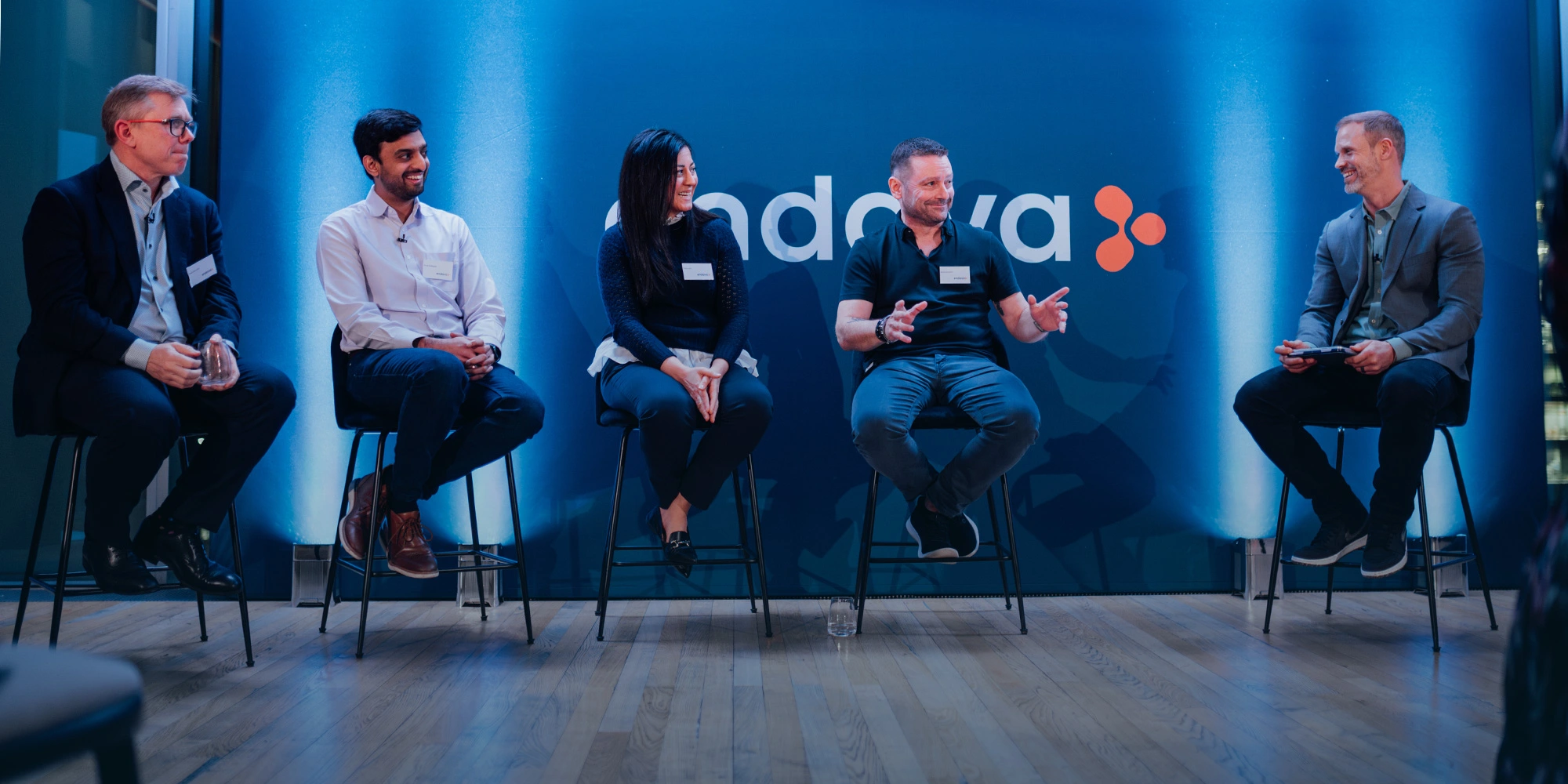We’re at a pivotal moment in society where the relationship between people and technology is under the spotlight. Recent advancements in technology present huge opportunities for humanity – to enhance our lives and make a positive difference in the world – but these ambitions can only be realised if people remain at the heart of everything we do, and why we do it.
In February, our partners, customers and industry leaders joined us at the Tate Modern in London for an evening of lively discussion around the synergy of people and technology. The panellists shared personal experiences and learnings on what it takes to make a positive impact on society, as well as pitfalls to avoid along the way.
Here’s a snapshot of the conversation highlights…
The panel: Diving into the opportunity together
Together with our moderator, Scott Harkey, Global Head of Marketing at Endava, panellists talked about why a people-centric approach matters, how to put it into practice and how it’ll shape the future landscape.
- Ranjit Balijepalli, Product Lead UK&I, Stripe
- Richard Waters, Director, Solution Consulting, ServiceNow
- Peter Reynolds, EVP, Real Time Payments, Mastercard
- Priya John, Group Head of Business Transformation, Endava
Why people-centricity is important
“Technology only reaches total fruition when it enables people to do their best work.” - Ranjit Balijepalli, Product Lead UK&I, Stripe
A common thread throughout the conversation was the need to take people on a journey throughout every stage of a digital project, not just certain points. Success comes from treating people with dignity, respect and empowering them to achieve their goals – including internal teams, customers and everyone around them.
And the benefits of this approach were clear from hearing the panellists’ experiences. For example, Peter Reynolds spoke about how people-first design and deployment of real-time payments opened the door to greater financial inclusion in Peru, in turn empowering economies, too. Meanwhile, Richard Waters shared how a bank was able to make leaps towards its future goals by starting small and gradually building employee buy-in, helping them grow into a network of champions.
How to nurture people-first technology
- Collaborating in diverse teams – Priya John spoke about how businesses need people from different backgrounds to shape solutions. To make technologies stick, we need to learn from different perspectives, not just the loudest voices.
- A clear vision – Keeping laser-focused on how to engage different people along the transformation journey is key. Peter Reynolds shared how this clarity should be balanced with an agile execution.
- Bottom-up approach – Ranjit Balijepalli noted that while taking the time to understand individuals’ specific needs and values and building a relationship can be a long learning process, it’s one that fosters meaningful change.
- Innovation mindset – Creating space to fail is at the heart of driving innovation, as both Richard Waters and Priya John discussed. Businesses need to take the fear out of change on an organisational level, encourage experimentation and constant learning.
The true success of any technology hinges on starting with a clear purpose for people, and ensuring the human impact is considered at every stage of development and deployment. A common pitfall for businesses is focusing too much on the technology itself and not the people it will ultimately impact, expecting the technology to lead and people to follow.
Embracing the best of AI
“The power of generative AI is that it’s so accessible. If organisations stay open to the opportunities and embed it into human decision-making, employees will find new creative and valuable ways to use it.” - Scott Harkey, Global Head of Marketing, Endava
AI is by no means a new technology, but the rise of generative AI specifically has created fresh opportunities and challenges for businesses and individuals alike.
As AI has become much more democratised, it’s opening up areas like large language models to all employees – not just data engineers, as Ranjit Balijepalli pointed out. The panellists see AI as an enabler for testing new ideas and building on digital projects iteratively. But as Peter Reynolds noted, we need to be mindful of biases in datasets. AI can transform good programmes into better ones, but it can’t turn bad programmes into good ones.
Making AI work harder for people
For AI to truly serve people, businesses need to get people comfortable with it first, according to Richard Waters. That’s why the metaverse failed to take off, as the right people weren’t engaged in the journey. Once you build trust, people will bring their own experience and knowledge to these tools to solve problems and reimagine how work gets done.
Priya John also shared insights about how AI can be used to empower employees. While the productivity and efficiency benefits of applications are interesting, there are untapped opportunities for using data around individual’s career journeys. With AI, organisations can better understand skillsets and training needs to fuel their growth trajectory.
AI is a powerful tool that, with the correct approach and responsible care, has the potential to transform all corners of society for the better. With the AI revolution in full swing, and growing concerns around the associated harms and risks, putting people first has never been so important.
Building technology for good
Thinking about how the relationship between people and technology will look in the next 50 years, the panellists all agreed that we need to use it for the good of society and the planet. If we can make technology a core part of people’s lives, rather than just viewing it as a means of making money, we have the chance to create a life-changing difference.
Our challenge to our audience and readers is this - imagine a world where the perfect synergy between people and technology exists. What does this look like? And what role can you play to help us achieve this?
Get an inside look at the event and see it from our leaders' perspectives!
